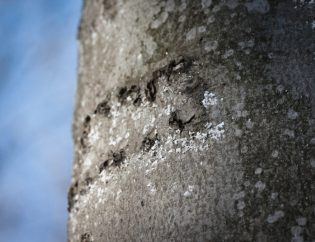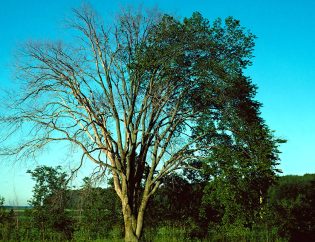
Ash trees are an essential part of Ontario’s landscape, providing shade, contributing to biodiversity, and enhancing the beauty of public and private spaces. However, southeastern Ontario’s ash trees face a significant threat: the emerald ash borer (EAB). This small, metallic green beetle, native to Asia, has wreaked havoc on ash tree populations across North America since it was first detected in Michigan in 2002. In southeastern Ontario, the infestation continues to spread, making it crucial for property owners and municipalities to have their ash trees checked regularly.
What is the Emerald Ash Borer?
The emerald ash borer (Agrilus planipennis) is an invasive insect species that attacks all species of ash trees (Fraxinus spp.), including green, white, black, and blue ash. Adult beetles lay eggs on the bark of ash trees, and after hatching, the larvae bore into the tree’s vascular tissue. These larvae feed on the inner bark, disrupting the tree’s ability to transport water and nutrients. As the infestation progresses, the tree experiences dieback and, without intervention, eventually dies within a few years.
Since the emerald ash borer has no natural predators in North America, it spreads rapidly and is notoriously difficult to control once established. This has led to devastating losses of ash trees across the continent, and southeastern Ontario is no exception.
Why Should Ash Trees Be Checked?
Regular inspection of ash trees is vital for early detection of emerald ash borer infestation. The earlier the infestation is identified, the better the chances of saving the tree. Early signs of an infestation are subtle and can be difficult for untrained eyes to spot. Common symptoms include thinning leaves, canopy dieback, D-shaped exit holes in the bark, and increased woodpecker activity, as these birds feed on the larvae.
A professional arborist, trained to identify signs of EAB infestation, can perform a thorough assessment and recommend appropriate action. Depending on the severity of the infestation and the health of the tree, it may be possible to treat the tree with systemic insecticides. If caught early, treatments like trunk injections of insecticides can be effective at protecting ash trees from the borer.
Environmental and Economic Impacts
Unchecked EAB infestations pose significant environmental and economic risks. Ash trees are a critical part of southeastern Ontario’s ecosystems, providing habitat for wildlife and contributing to forest diversity. The loss of ash trees can lead to long-term ecological imbalances, including the disruption of local wildlife habitats and increased vulnerability to other invasive species.
In urban areas, dead ash trees can become hazardous, posing risks to people, property, and infrastructure. Removing dead or dying trees is costly, and homeowners and municipalities can incur significant expenses. By checking for EAB and acting swiftly, these costs can be minimized. Preventive measures and early treatments are far less expensive than the removal and replacement of mature trees.
The Role of Community and Government Action
While individual property owners play an important role in managing EAB infestations, coordinated efforts at the community and governmental levels are essential. Municipalities in southeastern Ontario have implemented monitoring programs, tree inventories, and public awareness campaigns to combat the spread of the emerald ash borer. Residents are encouraged to report signs of EAB infestation and avoid transporting firewood, which can unintentionally spread the pest.
The emerald ash borer continues to threaten ash trees across southeastern Ontario, making regular inspection of ash trees crucial. Early detection can mean the difference between saving a tree and losing it. With proactive action, homeowners, municipalities, and arborists can work together to mitigate the spread of this invasive pest, preserve the region’s ash trees, and protect the environmental and economic well-being of southeastern Ontario.

